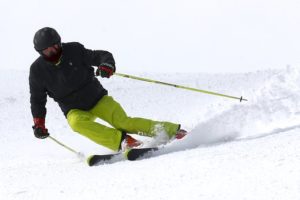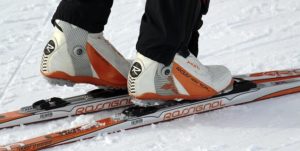Prepare to ski but check your feet fit the boots first
- Dr Abbie Clinics
- June 3, 2019
- News

Podiatrist, Dr Abbie Najjarine of Dr. Abbie Clinics said that by really knowing your biomechanics (how your body moves) plus your foot type and size, will ensure you get the best ski boot fitted, which can help avoid serious injury.
“Ski boots should fit like a glove because when skiing your feet, ankles and lower legs transmit pressure on the boots which in turn guide the skis, so it’s all connected,” he said.
“If your boots don’t fit well this can lead to accidents and falls, especially if you are a beginner. A podiatrist can provide a clear prescription to provide the ski boot hire company if you do not have your own boots,” he said.
“We can also prescribe an orthotic foot bed for feet that need extra support and for people who usually wear an orthotic in their everyday shoes, whilst boots can be customised – for example they can be ‘blown out’ to fit a foot with a bunion.
“It’s also important to note that people that pronate or roll the feet inwards, can cause internal strain on the inside ligaments of the knees and therefore customised orthotics for ski boots are essential for improved biomechanical support in skiing,” said Dr Najjarine.

“Ski boots are the most important piece of apparel for the slopes as are the ski socks which give added protection – so get these sorted out first before the ski clothes. Note that socks need to breathe and stay supportive throughout your skiing time and should be designed for cold temperatures so feet and toes stay warm with adequate blood flow,” he concluded.
If hiring boots on the ski slopes here are some tips to ensure you get the best boot:
- Check the person fitting your boot is experienced – you can also tell by the questions they ask you – they should ask you many. Don’t be swayed by the look of the boot, it’s how it fits.
- Your first impression may be that the boot is small. This may change once you have fastened the boot and flexed your ankle forward.
- Stand and flex your knees and ankle in order to get your heel into the heel pocket. Kicking back your heel doesn’t help as the heel tends to bounce forward because of the foam in the boot.
- The heel pocket should be firm enough to hold the heel bunt not too tight as to cause excessive pressure.
- Buckling of the boot should not cause hot spots or tightness where the buckles are. Pressure should be evenly spread while the foot is still held firmly.
- Over tightening a boot will change the intended shape of the boots shell and can cause foot cramps and discomfort.
- There should not be too much pressure at the inside or outside edges of the ball of the foot.
- There should be room for the toes to wiggle but the front part of the foot should not slide from side to side. Your toes may almost touch the end of the boot but note how they move back as the knees flex, which is ultimately the skiing position.
When skiing people may suffer with: bunion pain; Morton’s neuroma ( nerve entrapment of the nerve between the metatarsal area); metatarsalgia – burning and bruised feeling in the ball of the foot; plantar fasciitis-heel pain and arch pain; ankle pain; Achilles pain; shin pain; knee pain; hip pain and back pain; and lastly short leg syndrome that can cause many of these issues.
To be sure of your feet and your body’s biomechanics, visit one of Dr. Abbie Clinics practices for a full assessment. Call 1800 DR ABBIE or email reception@dr-abbie.com with any inquiries or bookings.


